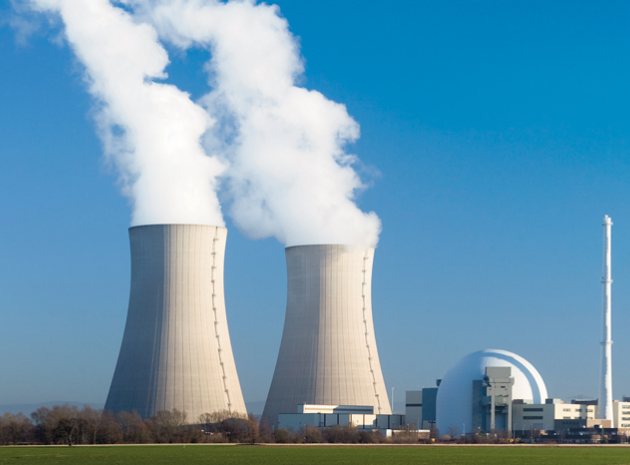Learners are bound to bring an energetic approach to these activities suggested by Dr Joanna Rhodes…
Briefly the lights flicker in the classroom. Our constant and steady power supply is something we take for granted until a storm causes power cuts or there are road works like those taking place at the moment down the road from our school. A debate begins in our classroom – are we going to have more power cuts? Why are electricity prices rising? Will some people die due to fuel poverty this winter? Should the Chinese own and build part of our nuclear power infrastructure? These topical issues have strong links with the Key Stage 3 physics syllabus and can be explored in a way that involves students in the energy debate.
This lesson explores renewable and non-renewable sources of power and the pros and cons associated with them. It looks at the technical aspects of generation, including transmission of power and the National Grid. It also encourages students to engage with the wider debate concerning the future of power generation within the UK.
Summary
Carbon footprint
One of the driving factors of changes in UK power generation is the commitment the UK has to reducing its carbon emissions. In this activity students use an online carbon footprint calculator to investigate their own carbon footprint [AR8]. This could be using data from home or sets of data for typical households created in advance by the teacher that allows students to select a set of data to input that most closely matches their home.
Starter activity
The generation game
All forms of power generation rely on transferring kinetic energy into electrical energy. An interesting starter activity allows students to make their own windmills to turn a small generator capable of lighting an array of LEDs or giving an output voltage measured on a voltmeter. Students can also use a three-speed fan to investigate the wind-speed on power generation. More able students can experiment with the angle of the blades to obtain maximum efficiency [Additional Resource 1]. To help students to recognise the similarities between all methods of power generation divide the class into groups of about four. Ask each group to produce an A3 flow chart showing how their chosen method of power generation turns kinetic energy into electrical energy. Ideas include, coal fired, gas fired, nuclear, hydroelectric, tidal, geothermal, solar and wind. Groups should also give some pros and cons of their method such as output, efficiency and pollutants emitted. Students could use laminated factsheets or have access to web based research [AR2].
Home learning
1. Carbon capture and storage
As well as changing our methods of generation the UK is also looking at ways to capture and store the carbon dioxide produced when generating power. Ask students to research what CCS means and to use their research to write a description of at least two different methods of CCS.
2. Socket overload
Do students use electricity safely in the home? A very visual simulation is available from twothirtyvolts.org.uk that allows students to virtually plug in a range of appliances to work out whether it overloads the socket [AR9]. This is available online or as a free app on the App Store. Students could investigate this for their own appliances at home or for prepared examples.
Main activities
1. A nuclear debate
Nuclear power is very efficient and has low carbon dioxide emissions. My students were fascinated to discover that just one uranium fuel pellet – roughly the size of the tip of an adult’s little finger – contains the same amount of energy as 500 m3 of natural gas, 800 Kg of coal or 600 L of oil. One nuclear power station can provide as much power as 400 km2 of wind turbines. Nuclear power does, however, generate nuclear waste, which lasts for a long time and is difficult to store. The consequences if something goes wrong can be quite severe. To illustrate this show students images of Fukushima before and after the Tsunami in 2011 [AR3]. The BBC also has a good microsite, which gives details of the history and aftermath of the Chernobyl disaster [AR4]. Recent UK Government proposals might see China building and part owning our next big nuclear power plant [AR5].
This has caused some to raise concerns about what would happen if our country fell out with China in the future. Divide students into groups working as representatives of an energy company bidding to build a new nuclear power station in the UK or as members of a local opposition group that is against the proposals. Each group should produce a presentation on their side of the debate regarding the future of the proposed power station. A class vote could add some excitement. As the debate is very topical the class could even present their research to an assembly and get a whole school exit poll. This provides strong links with PSHEE.
2. Gridlines or gridlock
Is there an energy crisis in the UK? Some people are predicting that there might be and that are heading for increasing prices, power cuts and fuel poverty in the future. Show students Gridwatch [AR6] a compelling website that shows the current status of the National Grid including easy to understand meters of total demand and output from various sources of power.
In this activity students create their own board game using Gridwatch and the National Grid website [AR7]. The challenge is to balance the power coming from a series of power stations to the usage around the country. Each power station has a fuel supply type and a power output. Students create a board representing the UK divided into homes, infrastructure, companies and businesses, hospitals, schools and leisure. Each of these has a power requirement adding up to an approximate total of 40GW. Balance these so they are close to the total power output of your power stations each of which is between 0.5GW and 4GW. Then create a series of chance cards. You can be as inventive as you like but these could read “Coal supply interrupted – output of power station A drops by 1GW”; “Wind turbines stop operating due to stormy conditions – output of power stations C and D drops by 1GW” and conversely “Gas prices fall boosting output of power station F by 2 MW”; “UK opens new Nuclear Power plant – Add 4MW of production”. As students play the game they have to decide which users to keep switched on and whether the lights in our homes will have to go out. More able students may be able to construct a second deck of chance cards based on usage, for example “cold weather snap boosts home use by 5GW”.
About our expert
Dr Joanna L. Rhodes M.Chem, D.Phil, MRSC is a teacher of science at Shelley College, Huddersfield.
Stretch them further
When current flows through a wire, some energy is lost as heat. The higher the current, the more heat is lost. The National Grid transmits electricity at a low current to reduce these losses. This requires a high voltage. Power stations produce electricity at 25,000V. Electricity is sent through the National Grid cables at 400,000V, 275,000V and 132,000V. Ask students to use the resource on BBC Bitesize to calculate primary and secondary voltages resulting from the number of coils on the transformer [AR10]. Online worksheets and quizzes on transmission of power and transformers, plus handy revision notes, are available from twothirty volts.org.uk [AR11].
ADDITIONAL RESOURCES
[1] STEM – MAKING WIND TURBINES TINYURL.COM/TSPOWER1
[2] GENERATING ELECTRICITY TINYURL.COM/TSPOWER2
[3] JAPAN TSUNAMI BEFORE AND AFTER IMAGES TINYURL.COM/TSPOWER3
[4] BBC IN DEPTH GUIDE TO THE CHERNOBYL DISASTER TINYURL.COM/TSPOWER4
[5] TELEGRAPH REPORTS ON THE UK ENERGY CRISIS TINYURL.COM/TSPOWER5
[6] NATIONAL GRID STATUS TINYURL.COM/TSPOWER6
[7] NATIONAL GRID – BALANCING THE NETWORK TINYURL.COM/TSPOWER7
[8] CARBON FOOTPRINT CALCULATOR TINYURL.COM/TSPOWER8
[9] SOCKET OVERLOAD CALCULATOR TINYURL.COM/TSPOWER9
[10] STEP UP AND STEP DOWN TRANSFORMERS TINYURL.COM/TSPOWER10
[11] TRANSFORMERS AND TRANSMISSION REVISION NOTES AND QUIZZES TINYURL.COM/TSPOWER11











Learners are bound to bring an energetic approach to these activities suggested by Dr Joanna Rhodes…